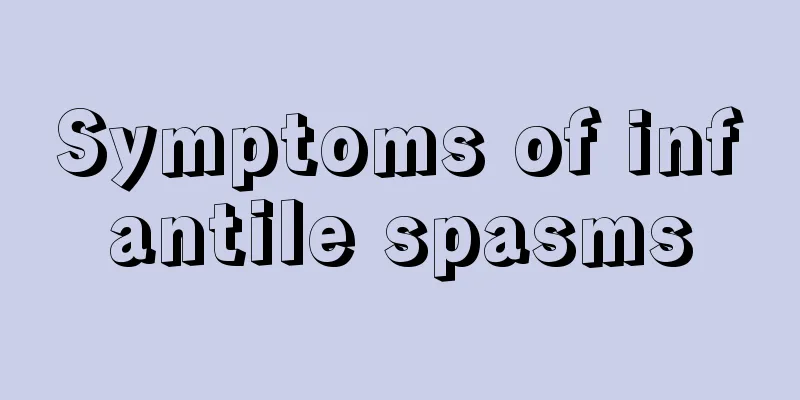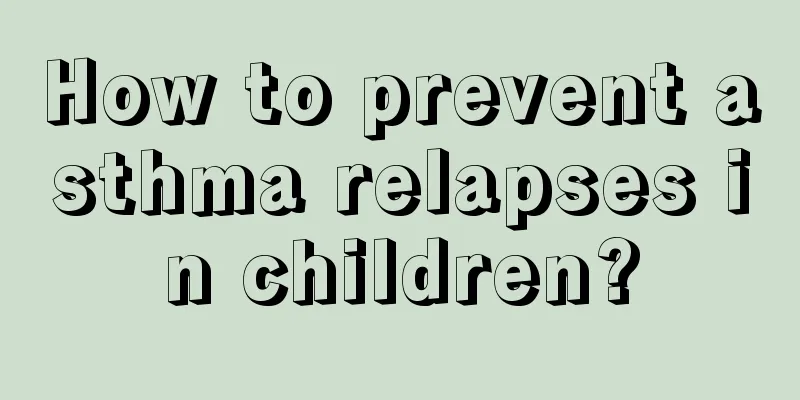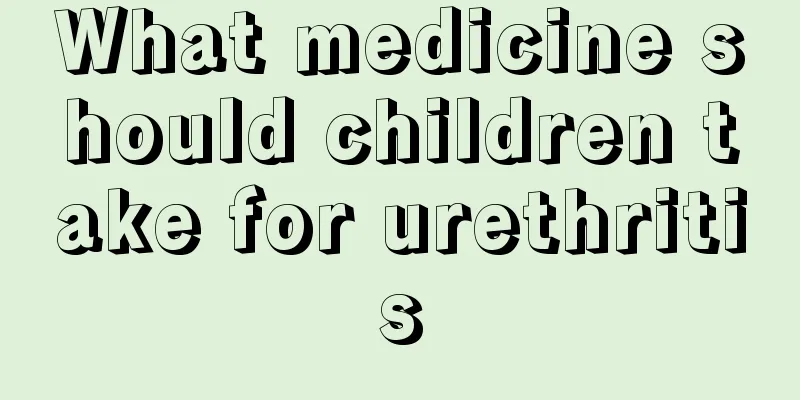Symptoms of infantile spasms

|
In daily life, we may not understand certain diseases due to lack of observation, which may lead to our failure to detect and treat the diseases in time. For example, what are the symptoms of infantile spasms, when are they prone to occur, and when is the peak period of onset? Next, let us understand some basic symptoms of infantile spasms so that we can treat infantile spasms in time when we encounter them. This disease, also known as West syndrome, is a type of epilepsy unique to infancy. It develops at an early age and has a special form of spasm. 90% of them are accompanied by obvious intellectual and physical development disorders. Encephalitis, birth injuries, and brain trauma are common causes, with males more likely to develop the disease than females. The onset ranges from a few days after birth to 30 months, with the majority occurring between 3 and 9 months, and the peak period being between 4 and 6 months. Infantile spasms are characterized by sudden onset of brief whole-body muscle spasms, with the neck, trunk and legs flexing, adducting or abducting, and the arms extending forward and outward in a hugging position; nodding-like seizures occur; the duration is very short and it is difficult to detect if you don't pay attention. A single attack is short, lasting 2 to 10 seconds; the whole body, especially the head and upper body, is bent forward; the attacks are frequent, with multiple attacks in one day, and each attack can occur several times or even dozens of times in succession; the attack time is usually when one has just fallen asleep or just woken up and the consciousness is still in a hazy state, and may be accompanied by loss of consciousness, sweating, cyanosis of the face, and fatigue and drowsiness; the EEG manifestations during the attack period are different, and the inter-attack period is mostly characterized by characteristic high-peak rhythm disorders. Through this article, we have a certain understanding of the basic symptoms and characteristics of infantile spasms. We hope that parents, especially inexperienced young parents, will pay more attention to the growth of their children during infancy, just in case. If they are unfortunately suffering from infantile spasms, they can be detected and treated early. |
<<: Introduction to the growth and development rules of children
>>: Causes of excessive eye mucus in children
Recommend
10 safety precautions for children when traveling by car
1. It is strictly forbidden to place children in ...
What to check for short height in children
Children's height is constantly increasing du...
Causes and treatment of scleredema in children
Newborn babies are weak and have insufficient res...
A magic recipe for removing phlegm from eight-month-old babies
Eight-month-old babies are very susceptible to ex...
What to do if your child has phlegm in his throat while sleeping
Many parents are very distressed when their child...
The child's body is always shaking when sleeping
When children are sleeping, no matter what abnorm...
What is the dosage of medication for children with allergic diseases?
As children grow from birth to adulthood, they wi...
How to make banana baby food
When babies grow to a certain stage, they need to...
The child is awake and coughing
Some children are prone to coughing after waking ...
Why does a child have pain around the navel and vomit?
As we all know, abdominal pain in children is a c...
What are the symptoms of gynecology in children?
In life, many women suffer from gynecological dis...
The difference between measles and rubella
Children's physical resistance cannot be comp...
Symptoms of calcium deficiency in 2-month-old babies
Calcium plays a very important role in human grow...
Symptoms of urticaria in children
Because children have very low body resistance an...
How to tell if a child has stomach worms
In real life, many children do not pay attention ...









